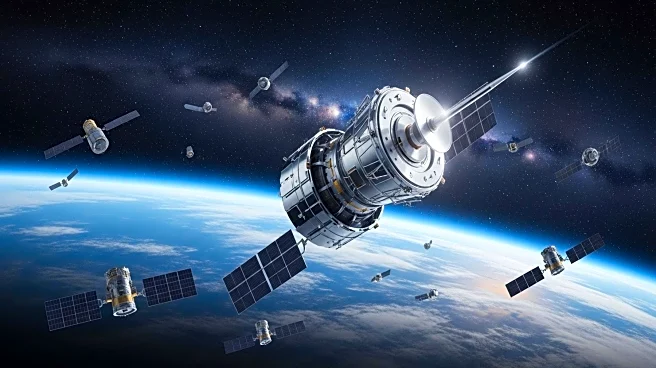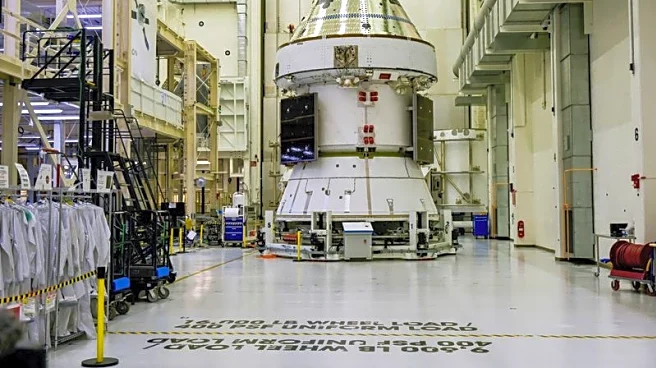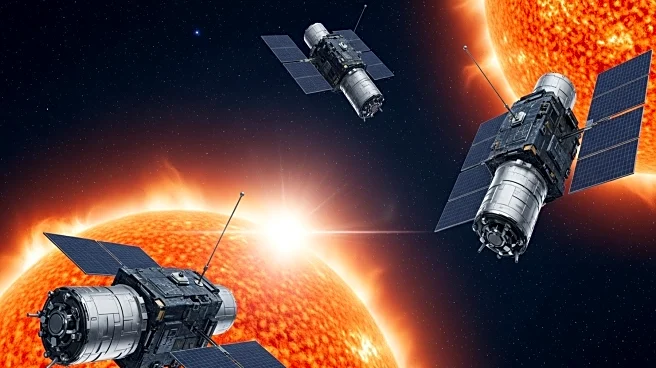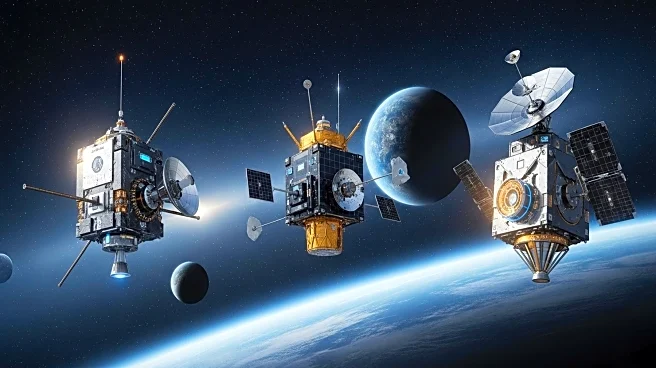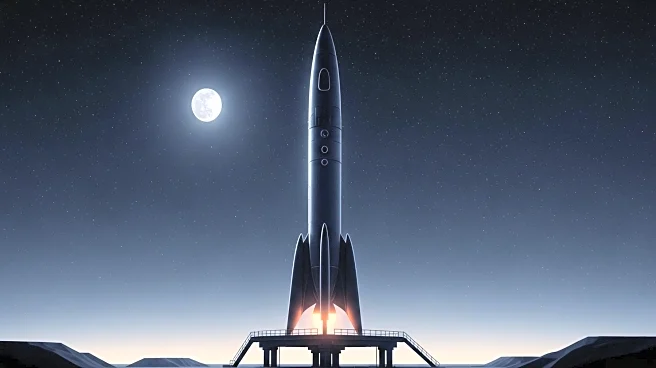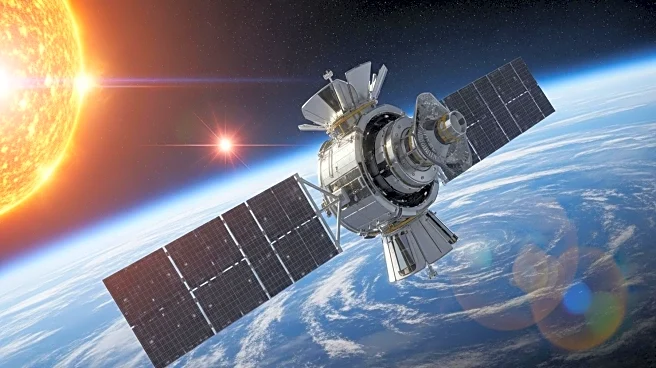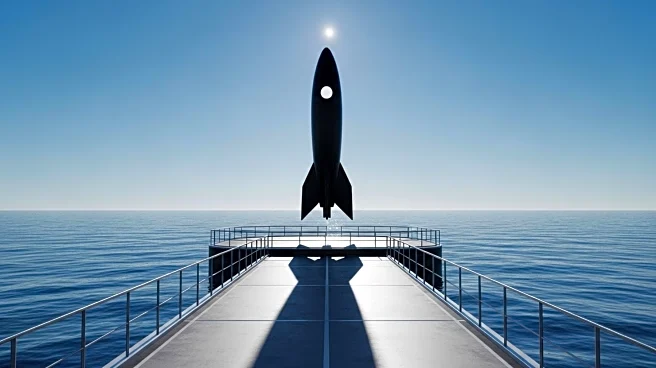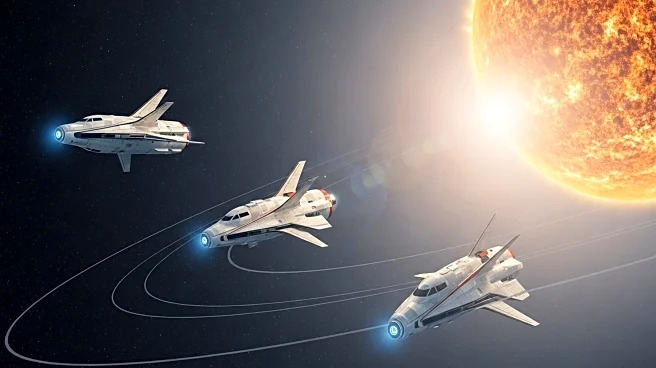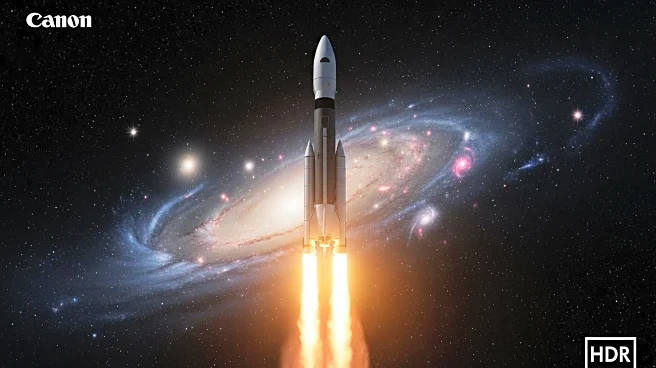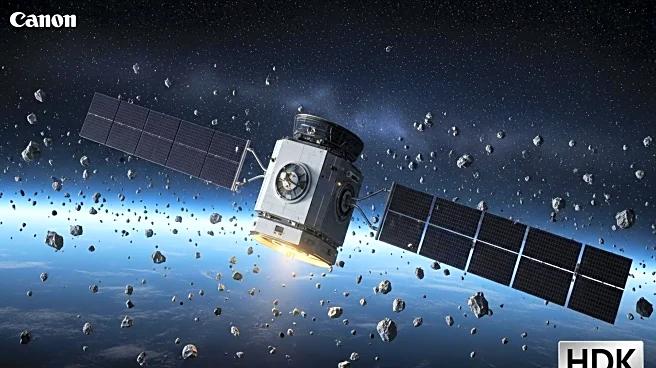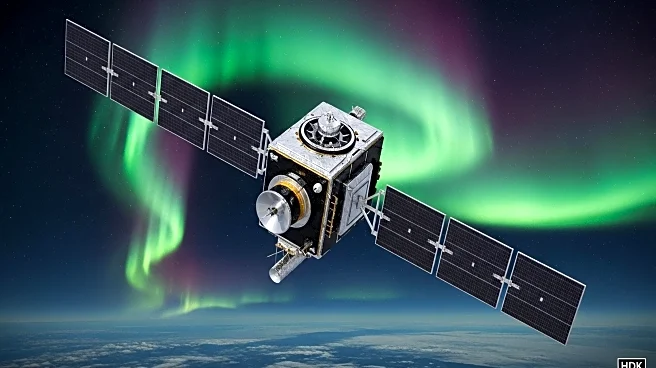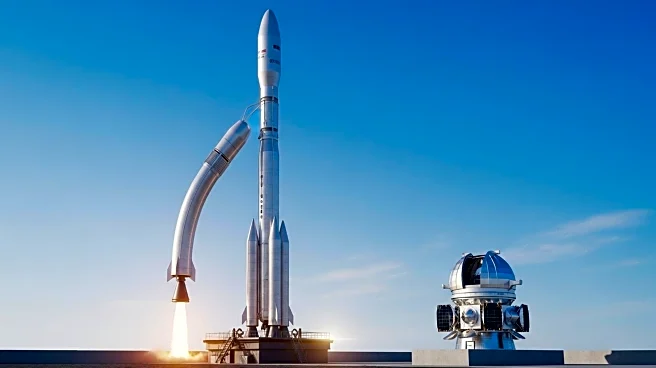What is the story about?
What's Happening?
SpaceX launched 28 Starlink satellites from Cape Canaveral Space Force Station, Florida, using a Falcon 9 rocket. The launch occurred at 4:39 a.m. EDT, and the satellites were deployed into low Earth orbit 64 minutes later. The Falcon 9's first stage, which has flown 22 missions, successfully landed on the drone ship 'A Shortfall of Gravitas' in the Atlantic Ocean. This mission contributes to SpaceX's goal of expanding the Starlink constellation, which now includes over 8,400 active satellites, making it the largest satellite network ever assembled.
Why It's Important?
The continued expansion of the Starlink network is crucial for providing global internet access, particularly in remote and underserved regions. SpaceX's ability to reuse rocket boosters has significantly reduced launch costs, enabling frequent satellite deployments and rapid network growth. This positions SpaceX as a dominant player in the satellite internet market, challenging traditional telecom providers and prompting competitors to accelerate their own satellite projects. The Starlink network also plays a vital role in emergency communications, offering connectivity in areas affected by natural disasters or conflict.
What's Next?
SpaceX plans to maintain its high launch frequency, with over 122 Falcon 9 missions conducted in 2025. The company is preparing to deploy larger Starlink V2 satellites using its Starship rocket, which could further enhance network capacity and introduce new services like direct-to-cell connectivity. As competition in the satellite internet market intensifies, SpaceX's advancements may drive innovation and lower costs, benefiting consumers worldwide. Regulatory and environmental considerations will also be crucial as the number of satellites in orbit increases.
Beyond the Headlines
The rapid expansion of satellite constellations raises concerns about space debris and the impact on astronomical observations. SpaceX has implemented measures to reduce satellite brightness and improve collision avoidance, but ongoing collaboration with scientists and regulators is necessary to address these challenges. The global race for satellite internet dominance highlights geopolitical implications, with countries like China and Russia developing their own networks to ensure communications independence.
AI Generated Content
Do you find this article useful?
